Pas de biographie disponible.
Compositeur Musique additionelle Librettiste Parolier Metteur en scène Chorégraphe Producteur création Producteur version
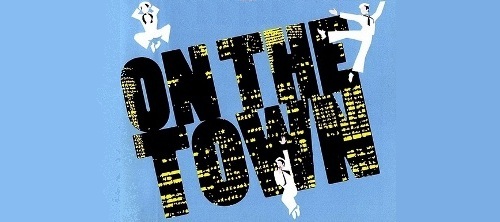
Musical
Musique: Leonard Bernstein • Paroles: Adolph Green • Betty Comden • Livret: Adolph Green • Betty Comden • Production originale: 14 versions mentionnées
Dispo: Résumé
Genèse:
Résumé: When three sailors disembark in New York City for their 24 hour leave, Ms. Turnstiles, an archeologist and a taxi-cab driver show them what it is to live on the town.
Création: 28/12/1944 - Adelphi Theatre (Broadway) - représ.
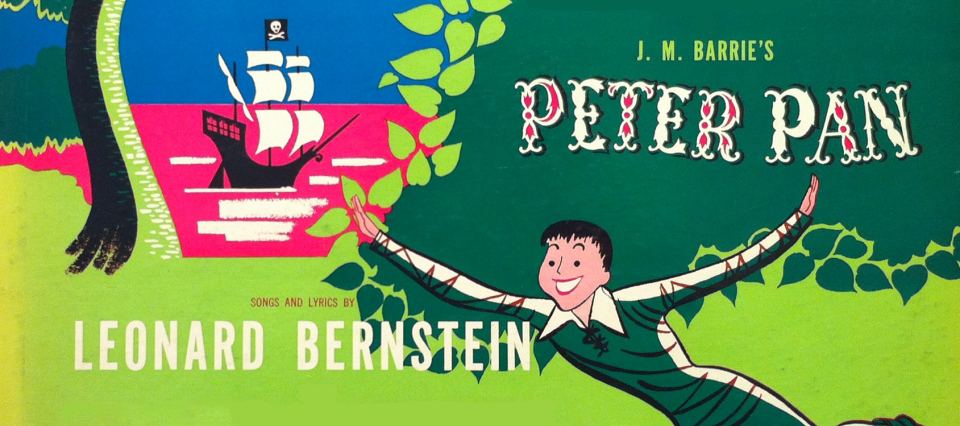
Musical
Musique: Leonard Bernstein • Paroles: Leonard Bernstein • Livret: J.M. Barrie • Production originale: 1 version mentionnée
Dispo: Liste chansons
,La pièce de théâtre Peter Pan, or The Boy Who Won’t Grow Up de James M. Barrie a été créée à Londres le 27 décembre 1904 pour 145 représentations. Nina Boucicault a été la première à jouer Peter Pan, et depuis lors, il est traditionnel que le rôle soit joué par une femme. Peter Pan a été joué pour la première fois à New York à l'Empire Theatre le 6 novembre 1905, pour 223 représentations. Bernstein va transformer la pièce en musical. Il en assumera la musique et les paroles, restant très proche du livret original de J.M. Barrie. Mais cette sera à nouveau adaptée quatre ans plus tard en musical, mettant en vedette Mary Martin, avec des paroles de Betty Comden et Adolph Green (avec qui Bernstein avait collaboré sur On the Town) des paroles de Carolyn Leigh et une musique de Moose Charlap. Un musical de Walt Disney est également sortie sur les écrans en 1953.
Genèse:
Résumé:
Création: 24/4/1950 - Imperial Theatre (Broadway) - 321 représ.

Musical
Musique: Leonard Bernstein • Paroles: Adolph Green • Betty Comden • Livret: Jerome Chodorov • Joseph Fields • Production originale: 8 versions mentionnées
Dispo: Synopsis Génèse Liste chansons
Genèse: Wonderful Town debuted on Broadway at the Winter Garden Theatre on February 25, 1953 and ran for 559 performances, closing on July 3, 1954 and starred Rosalind Russell and Edie Adams. It was directed by George Abbott, choreographed by Donald Saddler and produced by Robert Fryer. A London Production opened Feb 25th, 1955 at The Prince's Theatre, where it ran for 207 performances. The production starred Pat Kirkwood as Ruth, Shani Wallace as Eileen, and Sid James as Wrack. It was produced by Jack Hylton, and Cyril Ornadel served as music director. The show was broadcast live as a television special on CBS in 1958, again starring Rosalind Russell as Ruth Sherwood and Jackie McKeever as Eileen Sherwood. New York City Center productions have starred Nancy Walker (1958), Kaye Ballard (1963) and Elaine Stritch (1966). Stock productions gave Eve Arden and Nanette Fabray, among others, the opportunity to play Ruth. Lauren Bacall starred in a 1978 tour. A production opened in the West End at the Queen's Theatre in August 1986 and closed in March 1987, after playing at the Watford Palace, with Maureen Lipman (Ruth) and Emily Morgan (Eileen). The City Center Encores! Staged concert was presented in May 2000, starring Donna Murphy and Laura Benanti and directed and choreographed by Kathleen Marshall. It received "some of the best reviews the in-concert series has seen in some time, with particular praise being doled out for star Donna Murphy."[2] A revival opened on Broadway at the Al Hirschfeld Theatre on November 23, 2003 and closed on January 30, 2005, after 497 performances. With direction and choreography by Kathleen Marshall, it starred Donna Murphy, and later Brooke Shields.
Résumé:
Création: 25/2/1953 - Winter Garden Theatre (Broadway) - 559 représ.

Opéra
Musique: Leonard Bernstein • Paroles: Leonard Bernstein • Livret: Leonard Bernstein • Production originale: 1 version mentionnée
Dispo:
Le premier (mini-)opéra de Berstein est l’histoire d’un couple qui, au bout de dix ans de mariage, n’a plus rien à se dire. L'opéra a été créé le 12 juin 1952 au Festival of the Creative Arts sur le campus de l'Université Brandeis à Waltham devant près de 3 000 personnes. Une version fut présentée sur la chaine de télévision NBC en novembre 1952. Trouble in Tahiti fut présenté à Broadway en avril 1955 au Playhouse Theatre dans une soirée All in One, suivi par un ballet de Paul Draper et la courte pièce de théâtre de Tennesse William, 27 Wagons Full of Cotton.
Genèse:
Résumé:
Création: 19/4/1955 - Playhouse Theatre (Broadway) - 47 représ.
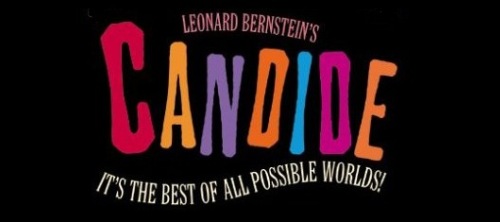
Musical
Musique: Leonard Bernstein • Paroles: Richard Wilbur • Livret: Lillian Hellman • Production originale: 24 versions mentionnées
Dispo: Résumé Synopsis Commentaire Génèse Liste chansons
Candide est une opérette avec de la musique de Leonard Bernstein, basée sur la nouvelle du même nom de Voltaire. Elle est jouée pour la première fois en 1956 avec un livret de Lillian Hellman mais, depuis 1974, elle est généralement interprétée avec un livret de Hugh Wheeler qui est plus fidèle au roman de Voltaire. Le parolier principal était le poète Richard Wilbur mais John Latouche, Dorothy Parker, Lillian Hellman, Stephen Sondheim, Leonard Bernstein, John Mauceri et John Wells ont également contribué aux paroles. Bien que ce fut un échec à sa création (73 représentations), Candide a aujourd'hui surmonté la réaction peu enthousiaste des premiers publics et premières critiques. Il est devenu très populaire.
Genèse: Version I - 1956 Les origines du musical Candide a été conçu à l’origine par Lillian Hellman comme une pièce de théâtre avec de la musique de scène. Bernstein, cependant, était si excité par cette idée qu’il a convaincu Hellman< d'en faire une «opérette comique»; elle a ensuite écrit le livret original pour l’opérette. Elle l'a voulu comme une «une critique politique dans l’après-maccarthysme » De nombreux paroliers y ont travaillé: d’abord James Agee (dont le travail n’a finalement pas été utilisé), puis Dorothy Parker, John Latouche et Richard Wilbur. En outre, les paroles de I Am Easily Assimilated ont été écrites par Leonard et Felicia Bernstein, et Hellman a écrit les paroles d'Eldorado. Hershy Kay a tout orchestré sauf l’ouverture, ce que Bernstein a fait lui-même. Création à Broadway (1956) – Flop Candide a ouvert à Broadway le 1er décembre 1956. La mise en scène était de Tyrone Guthrie et la direction musicale de Samuel Krachmalnick. Les décors et les costumes ont été conçus par Oliver Smith et Irene Sharaff, respectivement. Il a été chorégraphié par Anna Sokolow. Le cast de la création était constitué de Robert Rounseville (Candide), Barbara Cook (Cunégonde), Max Adrian (Dr. Pangloss) et Irra Petina (Old Lady). Cette production a été un désastre au box-office, avec seulement deux mois pour un total de 73 représentations. Le livret de Hellman a été critiqué dans le New York Times comme étant trop sérieux: «When Voltaire is ironic and bland, [Hellman] is explicit and vigorous. When he makes lightning, rapier thrusts, she provides body blows. Where he is diabolical, [she] is humanitarian ... the libretto ... seems too serious for the verve and mocking lyricism of Leonard Bernstein's score which, without being strictly 18th century, maintains, with its gay pastiche of past styles and forms, a period quality». Création à Londres (1959) – Échec La création londonienne a eu lieu au Saville Theatre sur Shaftesbury Avenue le 30 avril 1959 (après avoir été joué brièvement au New Theatre, à Oxford et à l’opéra de Manchester). Cette production a utilisé le livret de Lillian Hellman avec un crédit supplémentaire «assisté par Michael Stewart», et il a été mis en scène par Robert Lewis avec des chorégraphies de Jack Cole. La distribution comprenait Denis Quilley (Candide), Mary Costa (Cunegonde), Laurence Naismith (Dr. Pangloss) et Edith Coates (Old Lady). Il a tenu l'affiche 60 représentations... Revival à Broadway (1971) – Arrêté durant les Try-Out Le Candide de 1956 a brisé de nombreux cœurs au cours de son existence. La brillante partition de Leonard Bernstein est l’une des plus grandes jamais écrites, le livret de Lillian Hellman est plein d’esprit et incisif, et, de toute évidence, la mise en scène était très réussie. Mais ce fut un flop et c’est le disque qui a maintenu le spectacle vivant. Le revival de 1971 fut la première production américaine majeure de l’œuvre depuis la fermeture de l’original. Des Try-Out se sont déroulés durant quatre mois à San Francisco, Los Angeles et Washington D.C., mais le transfert à Broadway a été annulé. C'est ce que les américain appellent «closed on the road». Et encore une fois les cœurs étaient brisés. La version suivante, celle de 1974 a renversé le destin du musical, se jouant à Broadway pendant plus de deux ans et a remporté le New York Drama Critics’ Circle Award for Best Musical de la saison 1973-1974. Mais les puristes consternés auraient encore le cœur brisé car il s'agirait d'un tout nouveau livret. Version II - «Chelsea» - 1973 (Sans intervention de Bernstein) Un revival ou une recréation? Sans la participation de Bernstein, le spectacle a vécu une série de revivals à Broadway grâce à Harold Prince. Lillian Hellman, l’autrice du livret original, a refusé que son travail soit modifié ou utilisé en partie dans le revival, et Harold Prince a commandé un nouveau livret en un acte à Hugh Wheeler. Le seul élément du livret de Hellman qui a été conservé est le nom inventé pour le frère de Cunegonde: «Maximilien». Le personnage n’a pas de prénom dans la nouvelle de Voltaire. Les paroles ont été travaillées par l’équipe d’artistes originaux. Cette version de 105 minutes, omettant plus de la moitié des numéros musicaux, était connue sous le nom de Version Chelsea, et a ouvert en 1973 au Chelsea Theater Center de la Brooklyn Academy of Music avant de déménager à Broadway au Broadway Theatre le 10 mars 1974. Il tiendra l'affiche 740 représentations, ne fermant que le 4 janvier 1976. Le cast était constitué de Mark Baker (Candide), Maureen Brennan (Cunegonde), Sam Freed (Maximilian), Lewis J. Stadlen (Dr. Pangloss) et June Gable (Old Lady). En mars 1974, le musical a donc débarqué au pauvre Broadway Theatre qui venait de subir l’indignité de la pseudo «mise en scène totale» de Dude, The Highway Life () pour laquelle le théâtre avait subi une refonte physique drastique pour répondre aux exigences du scénario et de la mise en scène de cette comédie musicale rock. Tant de travail, tant de menuiserie, et tout s’était arrêté après 16 représentations. La Version Chelsea a été marquée par un style de production unique. Un orchestre de 13 musiciens a joué dans quatre zones. Le chef d’orchestre, qui portait un costume d’époque et une tresse d’or, pouvait être vu par le public et les musiciens sur les écrans de télévision. Avec Candide, le Broadway Theatre se retrouve avec un autre musical nécessitant une «mise en scène totale». Et le théâtre fut à nouveau remodelé passant de 1.700 sièges à 850 répartis en gradins qui étaient éparpillés dans divers coins et recoins, supprimant toute délimitation entre la salle et la scène. Eugene Lee a conçu sa scénographie pour aider le metteur en scène Harold Prince à permettre que son spectacle enchaînant des scènes dans des lieux différents ne s’enlise dans des changements de décors répétés et chronophages. Il a créé une dizaine d'aires de jeu organisées en plateformes situées à des niveaux multiples permettant aux scènes de s’enchainer en recentrant l’attention au lieu de changer de décor. Les acteurs se jouaient sur ces estrades et parfois au milieu des spectateurs. Au fur et à mesure que l’histoire se déroulait, certaines plateformes s’effondraient, s’écartaient ou se réunissaient. Les didascalies de l'adaptation indiquaient clairement que toutes ces zones étaient reliées par des rampes, des pont-levis, des trappes et des «passages cachés». Il y avait aussi quatre sections distinctes entre lesquelles les 13 musiciens de l’orchestre étaient répartis. Le chef d’orchestre, en costume d’époque, pouvait être vu par le public et les musiciens via des écrans de télévision. En quoi tout cela avait un lien avec Candide est discutable. Mais si cette scénographie radicale faisait grincer des dents, la production elle-même était très claire. Le livret, les chansons, et la mise en scène ont fait du show quelque chose de mignon, une suite insupportable – si on le compare à l'original – de numéros édulcorés et timides. L’esprit fragile de la brillante partition de Bernstein a été assujettie par des pitreries clownesques et le livre sardonique et acerbe de Lillian Hellman fut remplacée par l’humour, niveau maternelle, de la nouvelle adaptation de Hugh Wheeler. Et la plupart des critiques vont adorer: «I love Candide» (Richard Watts in the New York Post); «This is a doll of a show» (Clive Barnes in the New York Times); «If there is a lovelier Candide than this, it is difficult to imagine» (Lance Morrow in Time); «Candide is unquestionably the season’s most brilliant musical to date» (John Beaufort in the Christian Science Monitor); et Candide eqt «a splendid new musical on Broadway» (Leonard Harris on WCBSTV2). Le spectacle va recevoir 7 nominations aux Tony Award et en gagnera 4 don Best Book of Musical pour Hugh Wheeler et Best Direction of a musical pour Harold Prince. Il gagnera aussi 5 Drama Desk Awards. Même si le spectacle s'est joué 740 fois, il a perdu de l’argent. Le côté positif de ce revival est qu’il a sorti l'œuvre de sa confidentialité et l'a fait découvrir par un large public. Candide n’était plus un musical culte connu des seuls spécialistes. Mais l’inconvénient est que la plupart des nouvelles productions de l’œuvre vont vouloir recréer l’ambiance de carnaval et l’atmosphère de ce revival. Donc ce qui était une comédie musicale sardonique et amère pour adultes en 1956 est maintenant assimilable à un plaisir de cirque. Les paroles satiriques et la musique ont été émoussées, et l’histoire amère est adoucie par la bêtise des personnages. Il doit sûrement exister un compromis où Candide peut être à la fois être humoristique et satirique. Dernière remarque, cette version était présentée sans entracte, durant un peu plus de deux heures. Versions III - «Version Opéra» - 1982 (Sous la «supervision» de Bernstein) New York City Opera au Lincoln Center – 1982 De nombreuses compagnies d’opéra ont souhaité mettre à leur répertoire le Candide de Bernstein. Mais la Version II sur base du livret de Wheeler était trop courte et semblait incomplète. Pour offrir une version plus «légitime», le spectacle a été élargi toujours sur la base du livret de Wheeler (Version II et donc pas sur le livret original de Lillian Hellman). La Version Opéra en deux actes contient la majeure partie de la musique de Bernstein, y compris certaines chansons qui n’avaient pas été orchestrées dans la production originale et d’autres coupées dans la version de 1973. Cette Version III a été créée par le New York City Opera le 13 octobre 1982, à nouveau dans une mise en scène d’Harold Prince. Le spectacle sera joué à 34 représentations dans les répertoires des trois saisons qui suivirent… Le 18 novembre 1982, Lilian Hellman, autrice du livret original, a écrit une lettre un peu cinglante à Bernstein contenant: «Vous êtes trop insensible pour savoir que je n’aurais jamais voulu qu’un pirate comme Hugh Wheeler s’amuse avec mon travail, et je n’ai jamais aimé le travail de Hal Prince [...]». Elle mourra deux ans plus tard, le 30 juin 1984. Versions IV - «Version Scottish Opera» - 1988 (Sous la «supervision» de Bernstein) Scottish Opera – 1988 En 1988, Bernstein a commencé à travailler aux côtés de John Mauceri, alors directeur du Scottish Opera, pour produire une version exprimant ses dernières volontés à l’égard de Candide. Wheeler est mort le 26 juillet 1987 avant de pouvoir retravailler le texte, et John Wells fut engagé à cet effet. Le nouveau spectacle a d’abord été produit par le Scottish Opera avec le crédit «Adapté pour le Scottish Opera par John Wells et John Mauceri». Le spectacle incluait un nouvel Entracte et un chœur récurrent Universal Good créé par Bernstein à partir d'un air abandonné depuis longtemps. Il a été créé le 19 mai 1988 au Theatre Royale de Galsgow. La représentation est diffusée à la BBC (TV). Cette version est transférée à Londres où elle se joue 34 fois à l’Old Vic à partir du 1er décembre 1988. Versions V - «Final Revised Version» - 1989 (Bernstein) Barbican Center – Concert – 1989 Après avoir assisté aux dernières répétitions et à l’ouverture à Glasgow, Bernstein décida que le temps était venu pour que le compositeur lui-même réexamine Candide. Prenant la Version Scottisch Opéra (Version IV) comme base de travail, il fit des changements dans l’orchestration, remania l’ordre des scènes et des chansons dans l’acte II, et modifia la fin de plusieurs morceaux. Après ce travail de fond, Bernstein a dirigé les 12 et 13 décembre 1989 le London Symphony Orchestra and Chorus dans deux concerts au Barbican Center de Londres de ce qu’il a intitulé la Final Revised Version. Le cast et l’orchestre ont enregistré cette version aux Abbey Road Studios du 15 au 18 décembre 1989 et enregistré ce qu’il a appelé sa Final Revised Version avec Jerry Hadley (Candide), June Anderson (Cunegonde), Christa Ludwig (Old Lady) et Adolph Green (Dr. Pangloss). Deutsche Grammophon a sorti un DVD (2006, 147 min.) en son surround 5.0, de l’enregistrement du 13 décembre 1989 au London Barbican Center, avec un prologue et un épilogue en bonus video mais aussi un petit livret imprimé, «Bernstein et Voltaire» où John Wells expliquait ce que Bernstein voulait dans cette la Final Revised Version. Bernstein meurt moins d’un an plus tard, le 14 octobre 1990. Et après… Opera Theatre of St Louis – mai 1994 – Création sur scène de la “Final Revised Version” (Version V) Cette dernière version voulue par Bernstein a été crée le 2 mai 1994 au Loretto-Hilton Theater de St. Louis, pour 10 représentations, fermant le 25 juin. La mise en scène était de Colin Graham. Lyric Opera of Chicago – nov 1994 – Harold Prince remet en scène sa Version III Harold Prince allait une fois de plus s’attaquer à Candide. Mais pas avec la Final Revised Version. Non, il reprend sa version du New York City Opera de 1982 (Version III). Le cast comprenait Jason Danieley (Candide), Harolyn Blackwell (Cunegonde), Jim Dale (Dr. Pangloss), Andrea Martin (Old Lady) et Brent Barrett (Maximilian). Le spectacle s’est joué à 11 reprises du 26 novembre au 22 décembre 1994. Gershwin Theatre – 1997 – Harold Prince – Version III Après plus de vingt ans d’absence à Broadway (la version contestée mais populaire de 1973 au Broadway Theatre), Candide revient à Broadway toujours dans une mise en scène d’Harold Prince. Il présente cette fois une version plus sage, celle du New York City Opera de 1982 (Version III). Le musical se joue du 29 avril au 27 juillet 1997 au Gershwin Theatre pour 11 previews et 103 représentations. Le cast comprenait Jason Danieley (Candide), Harolyn Blackwell (Cunegonde), Jim Dale (Dr. Pangloss), Andrea Martin (Old Lady) et Brent Barrett (Maximilian). Le musical a reçu 4 nominations aux Tony Awards, dont Best Musical Revival. Versions VI - «NT Version» - 1999 (Sans Bernstein) National Theatre de Londres – 1999 En 1999, le Royal National Theatre de Londres a décidé de produire une nouvelle version de Candide. Le livret de Wheeler a été réécrit par John Caird. Ce nouveau livret est beaucoup plus proche du texte original de Voltaire que toutes les versions précédentes. Les chansons sont restées en grande partie comme Bernstein l’avait prévu, à part quelques retouches de Sondheim et Wilbur. Cette version, la NT Version, a été un grand succès et a par la suite été reprise à plusieurs reprises. Au National Theatre, elle s’est jouée en alternance (comme toujours au NT) à l’Olivier Theatre du 13 avril 1999 au 25 janvier 2000 pour 101 représentations. Un succès sans être un triomphe: la salle est remplie à 70%, ce qui est peu au National Theatre. La mise en scène était de John Caird. Et après… Théâtre du Chatelet à Paris – 2006 – “Final Revised Version” En 2006, à l’occasion du 50ème anniversaire de la création de Candide, le Théâtre du Châtelet à Paris a programmé l’œuvre dans une mise en scène de Robert Carsen. La version jouée est la Final Revised Version. La production transforme le proscenium en un gigantesque téléviseur des années 1950, et fait apparaître Voltaire comme narrateur, changeant de chaîne entre certaines scènes. Robert Carsen resitue l’action dans le monde des années 1950-1960, avec une perspective américaine commentant la politique mondiale contemporaine. Rappelons que c’est un retour aux sources puisque l’on est très proche des intentions originales de la Version I et du livret original de Lillian Hellman. Cette production a été terriblement contestée… L’article du journal Le Monde en est un bel exemple: « Après avoir enduré (contrairement à une partie de la salle, hilare) les quelque trois heures d'un spectacle sinistre à force de se vouloir drôle et intéressant, désert à force de vouloir "meubler", on se dit que Carsen aurait dû aller voir ce que d'autres ont fait de Candide. (…) La scène où sont caricaturés les cinq présidents de l'"entente cordiale", dont Jacques Chirac, bouteille à la main, n'a rien de bouffon ou de sarcastique: c'est, comme si souvent avec Carsen, le degré le plus bête de la relecture. (…) Robert Carsen dit : "S'il était en vie, j'espère que (Leonard Bernstein) approuverait nos choix." Ne faisons pas parler les morts, mais une petite voix nous dit qu'il serait horrifié.» La production devait être transférée au Teatro alla Scala de Milan en 2007. Mais ce transfert a été annulé après que Stéphane Lissner, directeur artistique et général de La Scala, ait vu la production à Paris. Mais plus tard la décision a été inversée et la production, retravaillée, y a bien joué comme prévu. Il fut ensuite transféré pour des représentations de l’ENO au Coliseum Theatre (23 juin au 12 juillet 2008). L’accueil y fut aussi houleux qu’à Paris ! La production du Châtelet a été filmée et diffusée sur Arte.
Résumé: Le jeune Candide vit à la cour du baron Thunder-ten-Tronckh sous les préceptes du philosophe Pangloss. Une aventure avec Cunégonde, la fille du baron, le force à l’exil. S’ensuivent alors une série de pérégrinations toutes plus étranges et dangereuses les unes que les autres qui mèneront Candide à changer son point de vue sur le monde. En ressortirat-il indemne?
Création: 1/12/1956 - Al Hirschfeld Theatre (Broadway) - représ.
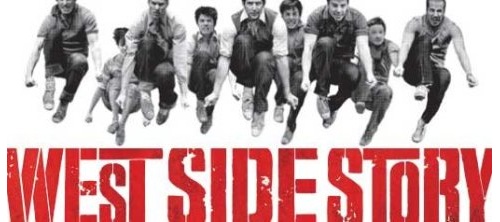
Musical
Musique: Leonard Bernstein • Paroles: Stephen Sondheim • Livret: Arthur Laurents • Production originale: 23 versions mentionnées
Dispo: Résumé Synopsis Génèse Isnpiration Liste chansons
Genèse: Genesis of the concept In 1947, Jerome Robbins approached Leonard Bernstein and Arthur Laurents about collaborating on a contemporary musical adaptation of Romeo and Juliet. He proposed that the plot focus on the conflict between an Irish American Roman Catholic family and a Jewish family living on the Lower East Side of Manhattan, during the Easter–Passover season. The girl has survived the Holocaust and emigrated from Israel; the conflict was to be centered around anti-Semitism of the Catholic "Jets" towards the Jewish "Emeralds" (a name that made its way into the script as a reference). Eager to write his first musical, Laurents immediately agreed. Bernstein wanted to present the material in operatic form, but Robbins and Laurents resisted the suggestion. They described the project as "lyric theatre", and Laurents wrote a first draft he called East Side Story. Only after he completed it did the group realize it was little more than a musicalization of themes that had already been covered in plays like Abie's Irish Rose. When he opted to drop out, the three men went their separate ways, and the piece was shelved for almost five years. In 1955, theatrical producer Martin Gabel was working on a stage adaptation of the James M. Cain novel Serenade, about an opera singer who comes to the realization he is homosexual, and he invited Laurents to write the book. Laurents accepted and suggested Bernstein and Robbins join the creative team. Robbins felt if the three were going to join forces, they should return to East Side Story, and Bernstein agreed. Laurents, however, was committed to Gabel, who introduced him to the young composer/lyricist Stephen Sondheim. Sondheim auditioned by playing the score for Saturday Night, his musical that was scheduled to open in the fall. Laurents liked the lyrics but was not impressed with the music. Sondheim did not care for Laurents' opinion. Serenade ultimately was shelved. Laurents was soon hired to write the screenplay for a remake of the 1934 Greta Garbo film The Painted Veil for Ava Gardner. While in Hollywood, he contacted Bernstein, who was in town conducting at the Hollywood Bowl. The two met at the Beverly Hills Hotel, and the conversation turned to juvenile delinquent gangs, a fairly recent social phenomenon that had received major coverage on the front pages of the morning newspapers due to a Chicano turf war. Bernstein suggested they rework East Side Story and set it in Los Angeles, but Laurents felt he was more familiar with Puerto Ricans and Harlem than he was with Mexican Americans and Olvera Street. The two contacted Robbins, who was enthusiastic about a musical with a Latin beat. He arrived in Hollywood to choreograph the dance sequences for The King and I, and he and Laurents began developing the musical while working on their respective projects, keeping in touch with Bernstein, who had returned to New York. When the producer of The Painted Veil replaced Gardner with Eleanor Parker and asked Laurents to revise his script with her in mind, he backed out of the film, freeing him to devote all his time to the stage musical. Collaboration and developmentIn New York, Laurents went to the opening night party for a new play by Ugo Betti, and there he met Sondheim, who had heard that East Side Story, now retitled West Side Story, was back on track. Bernstein had decided he needed to concentrate solely on the music, and he and Robbins had invited Betty Comden and Adolph Green to write the lyrics, but the team opted to work on Peter Pan instead. Laurents asked Sondheim if he would be interested in tackling the task. Initially he resisted, because he was determined to write the full score for his next project (Saturday Night had been aborted), but Oscar Hammerstein convinced him that he would benefit from the experience, and he accepted. Meanwhile, Laurents had written a new draft of the book changing the characters' backgrounds: Anton, once an Irish American, was now of Polish and Irish descent, and the formerly Jewish Maria had become a Puerto Rican. The original book Laurents wrote closely adhered to Romeo and Juliet, but the characters based on Rosaline and the parents of the doomed lovers were eliminated early on. Later the scenes related to Juliet's faking her death and committing suicide also were deleted. Language posed a problem; four-letter curse words were uncommon in the theatre at the time, and slang expressions were avoided for fear they would be dated by the time the production opened. Laurents ultimately invented what sounded like real street talk but actually was not: "cut the frabba-jabba", for example.[12] Sondheim converted long passages of dialogue, and sometimes just a simple phrase like "A boy like that would kill your brother", into lyrics. With the help of Oscar Hammerstein, Laurents convinced Bernstein and Sondheim to move "One Hand, One Heart", which he considered too pristine for the balcony scene, to the scene set in the bridal shop, and as a result "Tonight" was written to replace it. Laurents felt that the building tension needed to be alleviated in order to increase the impact of the play's tragic outcome, so comic relief in the form of Officer Krupke was added to the second act. He was outvoted on other issues: he felt the lyrics to "America" and "I Feel Pretty" were too witty for the characters singing them, but they stayed in the score and proved to be audience favorites. Another song, "Kid Stuff", was added and quickly removed during the Washington, D.C. tryout when Laurents convinced the others it was helping tip the balance of the show into typical musical comedy. Bernstein composed West Side Story and Candide concurrently, which led to some switches of material between the two works. Tony and Maria's duet, "One Hand, One Heart", was originally intended for Cunegonde in Candide. The music of "Gee, Officer Krupke" was pulled from the Venice scene in Candide. Laurents explained the style that the creative team finally decided on: "Just as Tony and Maria, our Romeo and Juliet, set themselves apart from the other kids by their love, so we have tried to set them even further apart by their language, their songs, their movement. Wherever possible in the show, we have tried to heighten emotion or to articulate inarticulate adolescence through music, song or dance." The show was nearly complete in the fall of 1956, but almost everyone on the creative team needed to fulfill other commitments first. Robbins was involved with Bells Are Ringing, then Bernstein with Candide, and in January 1957 A Clearing in the Woods, Laurents' latest play, opened and quickly closed. When a backers' audition failed to raise any money for West Side Story late in the spring of 1957, only two months before the show was to begin rehearsals, producer Cheryl Crawford pulled out of the project. Every other producer had already turned down the show, deeming it too dark and depressing. Bernstein was despondent, but Sondheim convinced his friend Hal Prince, who was in Boston overseeing the out-of-town tryout of the new George Abbott musical New Girl in Town, to read the script. He liked it but decided to ask Abbott, his longtime mentor, for his opinion, and Abbott advised him to turn it down. Prince, aware that Abbott was the primary reason New Girl was in trouble, decided to ignore him, and he and his producing partner Robert Griffith flew to New York to hear the score.[19] In his memoirs, Prince recalled, "Sondheim and Bernstein sat at the piano playing through the music, and soon I was singing along with them." Production period Prince began cutting the budget and raising money. Robbins then announced he did not want to choreograph the show, but changed his mind when Prince agreed to an eight-week dance rehearsal period (instead of the customary four), since there was to be more dancing in West Side Story than in any previous Broadway show, and allowed Robbins to hire Peter Gennaro as his assistant.[20] Originally, when considering the cast, Laurents wanted James Dean for the lead role of Tony, but the actor had died before hearing of it. Sondheim found Larry Kert and Chita Rivera, who created the roles of Tony and Anita, respectively. Getting the work on stage was still not easy. Bernstein told Rolling Stone: "Everyone told us that [West Side Story] was an impossible project ... And we were told no one was going to be able to sing augmented fourths, as with "Ma-ri-a" ... Also, they said the score was too rangy for pop music ... Besides, who wanted to see a show in which the first-act curtain comes down on two dead bodies lying on the stage?... And then we had the really tough problem of casting it, because the characters had to be able not only to sing but dance and act and be taken for teenagers. Ultimately, some of the cast were teenagers, some were 21, some were 30 but looked 16. Some were wonderful singers but couldn't dance very well, or vice versa ... and if they could do both, they couldn't act." Throughout the rehearsal period, the New York newspapers were filled with articles about gang warfare, keeping the show's plot timely. Robbins kept the cast members playing the Sharks and the Jets separate in order to discourage them from socializing with each other and reminded everyone of the reality of gang violence by posting news stories on the bulletin board backstage. Robbins wanted a gritty realism from his sneaker- and jeans-clad cast. He gave the ensemble more freedom than Broadway dancers had previously been given to interpret their roles, and the dancers were thrilled to be treated like actors instead of just choreographed bodies. As the rehearsals wore on, Bernstein fought to keep his score together, as other members of the team called on him to cut out more and more of the sweeping or complex "operatic" passages. Columbia Records initially declined to record the cast album, saying the score was too depressing and too difficult. There were problems with Oliver Smith's designs. His painted backdrops were stunning, but the sets were, for the most part, either shabby looking or too stylized. Prince refused to spend money on new construction, and Smith was obliged to improve what he had as best he could with very little money to do it. The pre-Broadway run in Washington, D.C. was a critical and commercial success, although none of the reviews mentioned Sondheim, listed as co-lyricist, who was overshadowed by the better-known Bernstein. Bernstein magnanimously removed his name as co-author of the lyrics, although Sondheim was uncertain he wanted to receive sole credit for what he considered to be overly florid contributions by Bernstein. Robbins demanded and received a "Conceived by" credit, and used it to justify his making major decisions regarding changes in the show without consulting the others. As a result, by opening night on Broadway, none of his collaborators were talking to him. It has been rumored that while Bernstein was off trying to fix the musical Candide, Sondheim wrote some of the music for West Side Story, and that Bernstein's co-lyricist billing mysteriously disappeared from the credits of West Side Story during the tryout, presumably as a trade-off. However, Suskin states in Show Tunes that "As the writing progressed and the extent of Bernstein's lyric contributions became less, the composer agreed to rescind his credit...Contrary to rumor, Sondheim did not write music for the show; his only contribution came on "Something's Coming", where he developed the main strain of the chorus from music Bernstein wrote for the verse.) Original Broadway production After auditions in Washington, D.C. and Philadelphia beginning in August 1957, the original Broadway production opened at the Winter Garden Theatre on September 26, 1957 to positive reviews. The production was directed and choreographed by Jerome Robbins, produced by Robert E. Griffith and Harold Prince and starred Larry Kert as Tony, Carol Lawrence as Maria, Chita Rivera as Anita and David Winters as Baby John, the youngest of the gang members. Robbins won the Tony Award for Best Choreographer, and Oliver Smith won the Tony for Best Scenic Designer. Also nominated were Carol Lawrence, as Best Actress in a Supporting Role in a Musical, Max Goberman as Best Musical Director and Conductor, and Irene Sharaff for Best Costume Design. Carol Lawrence received the 1958 Theatre World Award. Lighting was designed by Jean Rosenthal. The production ran for 732 performances at the Winter Garden Theatre before touring and then returning to the Winter Garden Theatre in 1960 for another 253 performance engagement. The other principal or notable cast members in the original production were: Anybodys: Lee Becker, Riff: Michael Callan, A-Rab: Tony Mordente, Action: Eddie Roll, Big Deal: Martin Charnin, Gee-Tar: Tommy Abbott; Velma: Carole D'Andrea, Bernardo: Ken Le Roy, Chino: Jamie Sanchez, Nibbles: Ronnie Lee; Rosalia: Marilyn Cooper, Consuelo: Reri Grist, Teresita: Carmen Gutierrez, Francisca: Elizabeth Taylor; Lt. Schrank: Arch Johnson, Doc: Art Smith, and Krupke: William Bramley. Original London production The 1958 European premiere at the Manchester Opera House transferred to London, where it opened at Her Majesty's Theatre in the West End on Friday December 12, 1958 and ran until June 1961 with a total of 1,039 performances. Robbins directed and choreographed, and it was co-choreographed by Peter Gennaro, with scenery by Oliver Smith. Featured performers were George Chakiris, who won an Academy Award as Bernardo in the 1961 film version, as Riff, Marlys Watters as Maria, Don McKay as Tony, and Chita Rivera reprising her Broadway role as Anita. David Holliday, who had been playing Gladhand since the London opening, took over as Tony, playing opposite Roberta D'Esti's Maria, and Mary Preston as Anita. In February 1962, the West End (H. M. Tennent) production launched a five-month Scandinavian tour opening in Copenhagen, continuing to Oslo, Goteborg, Stockholm and Helsinki. Robert Jeffrey took over from David Holliday as Tony and Jill Martin played Maria. 1980 Broadway revival A Broadway revival opened at the Minskoff Theatre on February 14, 1980 and closed on November 30, 1980, after 333 performances. It was directed and choreographed by Robbins, with the book scenes co-directed by Gerald Freedman; Tom Abbott and Lee Becker Theodore assisted the choreography reproduction. The original scenic, lighting, and costume designs were used. It starred Ken Marshall as Tony, Hector Jamie Mercado as Bernardo, Josie de Guzman as Maria, and Debbie Allen as Anita. Both de Guzman and Allen received Tony Award nominations as Best Featured Actress in a Musical, and the musical was nominated as Best Reproduction (Play or Musical). Allen won the Drama Desk Award as Outstanding Featured Actress in a Musical. Other notable cast members in the revival included Brent Barrett as Diesel, Harolyn Blackwell as Francisca, Stephen Bogardus as Mouth Piece, Reed Jones as Big Deal, and Sammy Smith as Doc. Several dances from West Side Story were included in the Tony Award-winning 1989 Broadway production, Jerome Robbins' Broadway. 2009 Broadway revival In 2007, Arthur Laurents stated, "I've come up with a way of doing [West Side Story] that will make it absolutely contemporary without changing a word or a note." He directed a pre-Broadway production of West Side Story at the National Theatre in Washington, D.C. that ran from December 15, 2008 through January 17, 2009. The Broadway revival began previews at the Palace Theatre on February 23, 2009 and opened on March 19, 2009. The production wove Spanish lyrics and dialogue into the English libretto. The translations are by Tony Award winner Lin-Manuel Miranda. Laurents stated, "The musical theatre and cultural conventions of 1957 made it next to impossible for the characters to have authenticity. Every member of both gangs was always a potential killer even then. Now they actually will be. Only Tony and Maria try to live in a different world". In August 2009, some of the lyrics for "A Boy Like That" ("Un Hombre Asi") and "I Feel Pretty" ("Me Siento Hermosa"), which were previously sung in Spanish in the revival, were changed back to the original English.[36] However, the Spanish lyrics sung by the Sharks in the "Tonight" (Quintet) remained in Spanish. The cast featured Matt Cavenaugh as Tony, Josefina Scaglione as Maria and Karen Olivo as Anita. Olivo won the Tony Award for Best Featured Actress, while Scaglione was nominated for the award for Leading Actress. The cast recording won the Grammy Award for Best Musical Show Album. In July 2010, the producers reduced the size of the orchestra, replacing five musicians with an off-stage synthesizer. The production closed on January 2, 2011 after 748 performances and 27 previews. The revival sold 1,074,462 tickets on Broadway over the course of nearly two years.
Résumé: Située dans le New York du milieu des années 1950, l'intrigue cible surtout la rivalité entre Jets et Sharks, deux bandes de jeunes des bas-quartiers, pour le monopole du territoire. Les Sharks appartiennent à la première génération d'Américains émigrés de Porto Rico. Ils sont raillés par les Jets, jeunes de la classe ouvrière blanche qui se considèrent comme les véritables Américains car nés en Amérique, même si de parents eux-mêmes émigrés, qui d'Irlande ou de Suède ou encore de Pologne. Tony, amis du chef des Jets Riff, rencontre Maria, la sœur de Bernardo, chef des Sharks. Ils tombent amoureux pour le meilleur et le pire.
Création: 26/9/1957 - Winter Garden Theatre (Broadway) - représ.
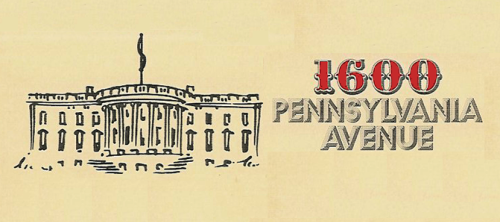
Musical
Musique: Leonard Bernstein • Paroles: Alan Jay Lerner • Livret: Alan Jay Lerner • Production originale: 1 version mentionnée
Dispo: Synopsis Génèse Liste chansons
Genèse: The musical opened on May 4, 1976 at the Mark Hellinger Theatre and closed on May 8, 1976 after 7 performances and 13 previews. It was co-directed and co-choreographed by Gilbert Moses and George Faison. The musical examined the establishment of the White House and its occupants from 1800 to 1900. Primarily focusing on race relations, the story depicted (among other incidents) Thomas Jefferson's then-alleged affair with a black maid, James Monroe's refusal to halt slavery in Washington, the aftermath of the American Civil War and Andrew Johnson's impeachment. Throughout the show, the leading actors performed multiple roles: Ken Howard played all the presidents, Patricia Routledge all the First Ladies, and Gilbert Price and Emily Yancy played the White House servants, Lud and Seena. Future Broadway stars Reid Shelton, Walter Charles, Beth Fowler and Richard Muenz appeared in ensemble roles, as did the young African American baritone Bruce Hubbard. The show was originally intended to be performed as a play-within-a-play, with the show's actors stepping out of character to comment on the plot and debate race relations from a modern standpoint. But this concept was almost entirely removed during the show's out-of-town tryouts in Philadelphia and Washington, D.C. The musical's original director, Frank Corsaro, choreographer, Donald McKayle, and set and costume designer, Tony Walton, left the production during these try-outs. By the time the show opened on Broadway, little of the metatheatrical concept remained, aside from certain scenic and costume elements and a few musical references (most notably, the opening number "Rehearse!"). Discouraged by the critical and public response to the work and angry that during the tryouts much of his music had been condensed and edited without his consent, Bernstein refused to allow a cast recording of the musical. Critical reaction The initial critical response to the show was resoundingly negative. Critics savaged Lerner's book while largely praising Bernstein's score. Only Patricia Routledge was spared, thanks mostly to her second act showstopper "Duet for One (The First Lady of the Land)" for which she received a mid-show standing ovation on opening night in New York. After Bernstein's death a concert version of the score, retitled A White House Cantata was recorded and released. That version tended to be reviewed as a classical work rather than a Broadway musical, a tendency encouraged by the casting of the leading roles with opera singers. Differences in the score and performance style make it impossible to judge the original musical fairly from the later recording. The score is considered by many musical theater historians and aficionados to be a forgotten, or at least neglected, masterpiece. Some of the songs have enjoyed some fame outside the show including "Take Care of This House," "The President Jefferson Sunday Luncheon Party March" and "Duet for One", a tour-de-force for a single actress portraying both Julia Grant and Lucy Hayes on the day of Rutherford B. Hayes's inauguration detailing the exhausting vote counts that had many questioning his legitimacy. Author Ethan Mordden noted that "Bernstein and Lerner created an astonishingly good score, even a synoptic all-American one, with fanfare, march, waltz, blues. It's Bernstein's most classical work for Broadway." Reuse of material in other works As with his previously abandoned projects, Bernstein used portions of the score in subsequent works. In Songfest, for example, the setting of Walt Whitman's poem "To What You Said" as a baritone solo was a reworking of the original prelude of the show, in which the chorus hummed a melody played by the violoncello in the Songfest version. (In the show, this music was moved to the emotional low point of the second act, used as background to a Presidential funeral.) The occasional piece Slava! A Political Overture, written in honor of Bernstein's friend Mstislav Rostropovich, blended two numbers from the show, the up-tempo "Rehearse!" and "The Grand Old Party." Early in the opera A Quiet Place, the music for the aria "You're late, you shouldn't have come" derives from that of "Me," a song that in the original show established the meta-theatrical concept that was eventually abandoned. (Some of the music for "Me" can be heard in the Broadway score, most memorably in the song "American Dreaming.") An instrumental section of "The President Jefferson March" was reused in the final movement, "In Memoriam and March: The BSO Forever," of the Divertimento. Subsequent revivals The show's only significant revival was a 1992 Indiana University Opera Theatre production, which used a pre-Philadelphia draft of the script and included portions of Bernstein's music that had been excised on the road to Broadway. This production also played briefly at the Kennedy Center in Washington, D.C. in August 1992. A White House Cantata After his death in 1990, Bernstein's children and associates sifted through the many variations and revisions of the score and authorized a choral version entitled A White House Cantata, which deleted nearly all the remaining play-within-a-play references. (Some can still be heard in the duet "Monroviad.") BBC Radio broadcast the London debut of this work in 1997, and three years later Deutsche Grammophon released an abridged performance in a CD recording. Both the London concert and the DG recording were conducted by Kent Nagano with the London Symphony Orchestra. The Leonard Bernstein estate controls the licensing of performances of the cantata version, but refuses to allow the performance, recording, or publication of the original musical.
Résumé:
Création: 4/5/1976 - Mark Hellinger Theatre (Broadway) - 7 représ.

Musical
Musique: Jule Styne • Leonard Bernstein • Richard Rodgers • Stephen Sondheim • Paroles: Stephen Sondheim • Livret: *** Divers • Production originale: 12 versions mentionnées
Dispo: Commentaire Génèse Liste chansons
Genèse: The revue had its première on May 4, 1976 at London's Mermaid Theatre, where it ran for 59 performances. It subsequently transferred to Wyndham's Theatre and then the Garrick for a grand total of 806 performances. Ned Sherrin directed, but Sondheim also worked with the cast and made many suggestions. Hal Prince produced the Broadway version, and persuaded Actors' Equity Association to allow the original British cast to transfer with the show. The production, again directed by Sherrin, opened on April 18, 1977 at the Music Box Theatre, and later transferred to the now-demolished Morosco Theatre. Between the two venues, it ran for a total 384 performances and 6 previews. It is one of the few shows to have the distinction of its entire cast being nominated for Tony Awards (Best Featured Actor in a Musical and Best Featured Actress in a Musical). A subsequent 1978 U. S. national tour starred Martin, Larry Kert, Barbara Heuman, and Hermione Gingold as the Narrator. A London West End revival opened at the Venue Theatre on May 1, 2007, and closed June 23, 2007, after 62 performances and 4 previews. The cast included Abbie Osman, Alasdair Harvey and Josie Walker, with rotating narrators. The musical was directed by Hannah Chissick with musical staging by Adam Cooper. International Numerous international productions have been mounted, including a production in Ireland in 1996 which starred Rebecca Storm, Brendan O'Carroll as the Narrator with Susie Fenwick, Enda Markey and Sarah-Jane Bourne. A production at the Seymour Centre in Sydney, Australia ran in 2011, and starred Amelia Cormack, Margi De Ferranti, Enda Markey and Jessica Rowe as the narrator. This production toured Australia in 2012, with Rachael Beck and then Lucy Maunder replacing Amelia Cormack; Michael Falzon replacing Markey and Geraldine Turner replacing De Feranti. On Friday 20 April 2012, a gala performance of the show took place at Theatre Royal, Sydney. Headlined by Ruthie Henshall and starring an array of Australia's leading musical theatre talent including Rachael Beck, Geraldine Turner, Peter Cousens, Enda Markey - who also produced, Lucy Durack, Ben Lewis, Stephen Mahy, Amanda Muggleton, Michael Falzon, Virginia Gay and many more.
Résumé:
Création: 4/5/1976 - Mermaid Theatre (Londres) - représ.